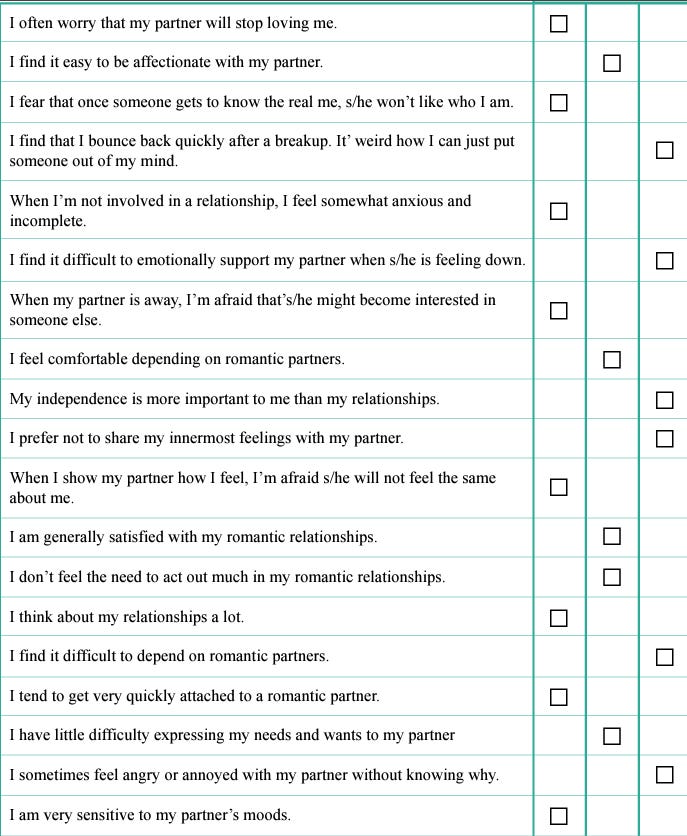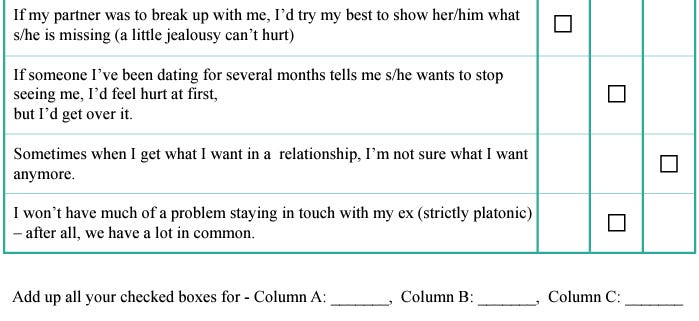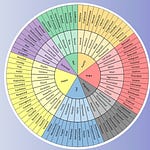Connection, intrapersonal (meaning inside yourself), interpersonal (with others), and transpersonal (connections that transcend the individual and extend to the larger world or something beyond oneself) are each factors of experience that help us exist in the world as safe, secure and unharmed. The quantifiable reality of safe, secure and unharmed is not what we are talking about here. It is the quality of it, the “felt sense”, that is why knowing about attachment style is so valuable. Attachment styles are about the way we connect with and relate to other people. Our style of attachment (connection) begins when we are born and continues to develop in the first few years of life.
Once it is established the attachment style often guides you in your life subliminally, like a commercial that may makes you hungry for something even if it is targeted to only be about Heinz Ketchup. It determines the way you relate to intimate partners, work colleagues, friends, and how you parent your own children. When we know our attachment style, we can understand why we behave the way we do when it comes to connection, belonging and relationships.
It also helps us to reassess the childhood emotional ‘toolbox’ we have and make changes if things from our history are negatively impacting the relationships we long for today. Below is an attachment questionnaire. Complete it as honestly as you can (this will give you a more accurate attachment style prediction).
Attachment Style Questionnaire Instructions
Alongside each statement in the questionnaire you will see only one checkbox in either the A, B or C column. If the statement is TRUE FOR YOU then tick the one available checkbox (don’t worry about which column it is in). If the statement is NOT TRUE FOR YOU then do nothing and leave the checkbox unchecked.
You will find scoring instructions following the questionnaire.
Note: Some or all of your style may apply or you may start to read and realize specific relationships brought out your style “for the worse”. At times all of us can be securely attached in a relationship and sometimes other styles come into play but you will find insight into registering a predominant style.
Anxious Attachment
When this is your predominant way of connecting with others you will greatly value closeness and aim for unique closeness with “inner circle people” especially a romantic partner. You long for and crave connection and intimacy. You may fear that that other (again definitely your partner) doesn’t want to be as close to you as you do. You may also doubt their love for you. When you begin, or sometimes at other points after trust is established if you are a guarded anxious, a relationship can feel all-consuming, and you may spend lots of time thinking about the relationship. You may also feel like you are on a seesaw at times, with intense feelings of happiness, but also some strong fears about how the relationship will progress. You can be very sensitive to your partner’s moods and actions, and often attribute negative thoughts to them (that they are angry or upset with you or something you have done). You may also take their behavior really personally and want to ‘fix’ things for them. You may become upset easily and feel a lot of negative emotions in the relationship especially if you feel your partner is not listening to you, paying attention to you feel like they are pulling away from you. As a result of these thoughts and feelings you might act out and be very emotional, saying and doing things that you regret later. You may struggle to set appropriate boundaries in your relationship. You may also give more in the relationship than your partner does. You may get involved in relationships very quickly and want the relationship to progress to a commitment as soon as possible.
Secure Attachment
You feel comfortable and loving in a committed relationship. You enjoy intimacy and connection, and you do not spend time worrying about your relationships. You are able to go with the flow when it comes to love and romance, and you don’t often get upset about relationship issues. You are a good communicator, and you are able to easily and comfortably share your needs and feelings with your partner. You are also able to read and understand your partner’s emotional cues and then respond to them appropriately. You share your successes, worries or concerns with you partner and you are able to be there for them if they need you. You are able to set appropriate boundaries. The level of give and take in the relationship is fairly even. You tend to start relationships slowly, getting to know your partner over time.
Avoidant Attachment
The things that are extremely important to you are independence and self-sufficiency. When in an intimate relationship you will have the tendency to push for your freedom and autonomy. Intimate relationships can feel claustrophobic. You want to feel connected to another, but you may also feel very uncomfortable if you feel there is too much closeness. You prefer to keep your relationships casual and your partner at a comfortable emotional distance. You don’t spend much time worrying about your romantic relationships or about being rejected. You prefer not to share too much information about yourself or what you do with your life you’re your partner and they will often complain that they feel unimportant to you and that you are emotionally distant. In a committed relationship you are constantly on the lookout for any signs that your partner is trying to control you or trying to take away your personal freedom.
After connection or intimacy, you may withdraw for periods of time. You may also talk openly about previous relationships and partners which can make your current partner uncomfortable and worried about how secure the relationship is. You tend to have very rigid boundaries and can be become very offended if people try to get too close to you.
Note: This questionnaire is not a clinic tool and provides a general indication of your attachment style only.
Knowing your attachment style helps you better process relationships, particularly losses and ruptures of the past. With this lens, you create a more coherent narrative, which is why I include it in the Narrative Tools part of your relearning and reprocessing life experiences for deeper connection to yourself such that you no longer think of things as needing to be fixed.
My journey exploring my own anxious attachment helped me see how much I held my story back out of fear of abandonment. This experience was reinforced however by holding back a core trauma and it reversed a child’s role to be protected by family to that of the child protecting the family from itself. This was key to my awareness as I came out of silence. Fighting a fear of abandonment may very likely have kept me silent for more years had I not empowered my anxiety and told myself if I did not abandon myself I would not every truly be able to be abandoned by anyone else.
This was a profound awakening and may have been what has inspired me to come out with the Toolbox Approach and include my story as its greatest impetus.












